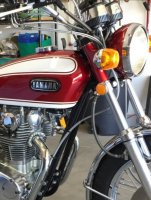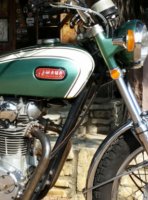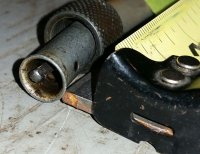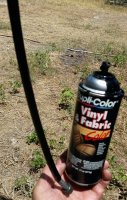I just had to add one more thing here. When I first took off this morning, the first stop I rolled up to the idle suddenly dropped and it felt like it wanted to die. I took off and everything was fine. The next stop sign I rolled up to the idle dropped again and this time it actually did die. That’s never happened before! It started right back up , I blipped the throttle and rode away. I kept running things through my mind, what could be causing this?
Then it hit me. The last time I had it out, I rode it until it got good and hot , and two things happened. The idle crept up so I backed the idle screws off a little to bring it back down. Also when my bike gets hot , my clutch free play loosens up and I get too much free play at the clutch lever and neutral starts to get hard to find. So using my little thumb wheel, I had removed all slack from my clutch cable. And I left those two items that way when I parked my bike.
So....today when I started out , my idle was too low and my clutch was dragging with the lever pulled all the way in.
When I would come to a stop, the slow idle couldn’t overcome the drag of the clutch and the idle would drop too low and the engine would die.
Then it hit me. The last time I had it out, I rode it until it got good and hot , and two things happened. The idle crept up so I backed the idle screws off a little to bring it back down. Also when my bike gets hot , my clutch free play loosens up and I get too much free play at the clutch lever and neutral starts to get hard to find. So using my little thumb wheel, I had removed all slack from my clutch cable. And I left those two items that way when I parked my bike.
So....today when I started out , my idle was too low and my clutch was dragging with the lever pulled all the way in.
When I would come to a stop, the slow idle couldn’t overcome the drag of the clutch and the idle would drop too low and the engine would die.

 ) dialled in very nicely, BUT - on especially hot or cold days, I still have to tweak the idle screw and blip the throttle.
) dialled in very nicely, BUT - on especially hot or cold days, I still have to tweak the idle screw and blip the throttle. I just keep clanging away , hoping to get lucky!
I just keep clanging away , hoping to get lucky! 





